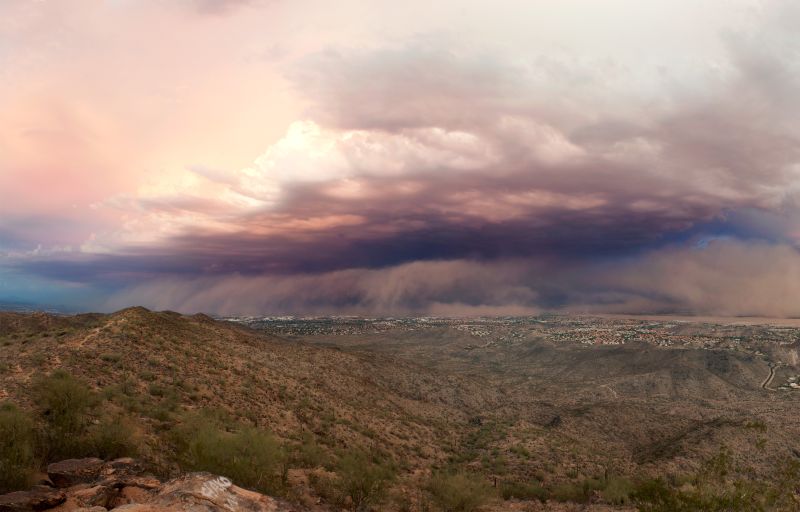After his father had conquered the Middle East, Cambyses II (the second emperor of Persia) set out on a conquest of the last independent state of that part of the world, Egypt. In 542BC he sent an army 50,000 strong, to the Siwa Oasis in an attempt to threaten the Oracle of Amun (I think he went a bit over the top here, an angry letter would have sufficed). As the massive army trekked across the desert they were swallowed up by a monstrous sandstorm, burying the 50,000 men and leaving none alive.
They thus became known as ‘the lost army of Cambyses’. Numerous archaeologists have attempted to unearth the army from their sandy graves, and there is news that the lost army may have recently been found (click here for a video regarding this story).
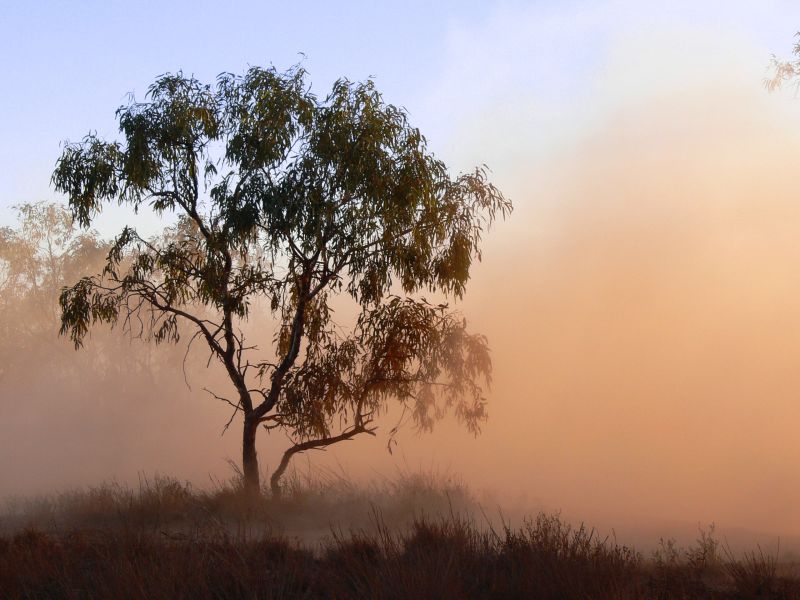
If the legend of Cambyses’ lost army is true, it demonstrates just how destructive a sandstorm can be. The wall of dust can tower more than a mile high, and when it hits, you are buffeted around by storm force winds.
Once you are in a sandstorm it’s too late to try and escape, you will feel a sense of disorientation as your sense of direction is completely compromised by almost nil visibility, and the sand lashing at your bare skin. To make matters worse, if you cannot cover your mouth, the sand will pour down your throat and into your lungs, suffocating you.
Sounds pretty terrifying doesn’t it? Luckily you don’t have to become a victim of the sand man, and by following these steps, a sandstorm will be like sand in your baguette – a mere annoyance but not life threatening.
‘To be prepared is half the victory’ – Miguel De Cervantes
There is nothing like preparation to ensure you survive. If you are travelling in areas known for sand storms (the obvious being deserts), it is worth packing appropriate equipment to deal with the worst case scenario. It will also be worth checking the forecasts as meteorologists can predict the likelihood of sand storms.
When travelling in these areas be sure to carry some airtight goggles and a mask that will filter out sand and dust from the air, while it is common sense to carry a lot of water in a desert, it’s worth mentioning water is essential. Some petroleum jelly applied to the nostrils will prevent them from drying up.
There’s a storm-a-brewing
If you can see the sand storm brewing on the horizon, don’t think that it’s your chance to grab some award-winning photography. Head in the opposite direction and try to maneuver around the storm. While they can be fast moving, a lot of sandstorms are quite slow, and it is possible to outrun them.
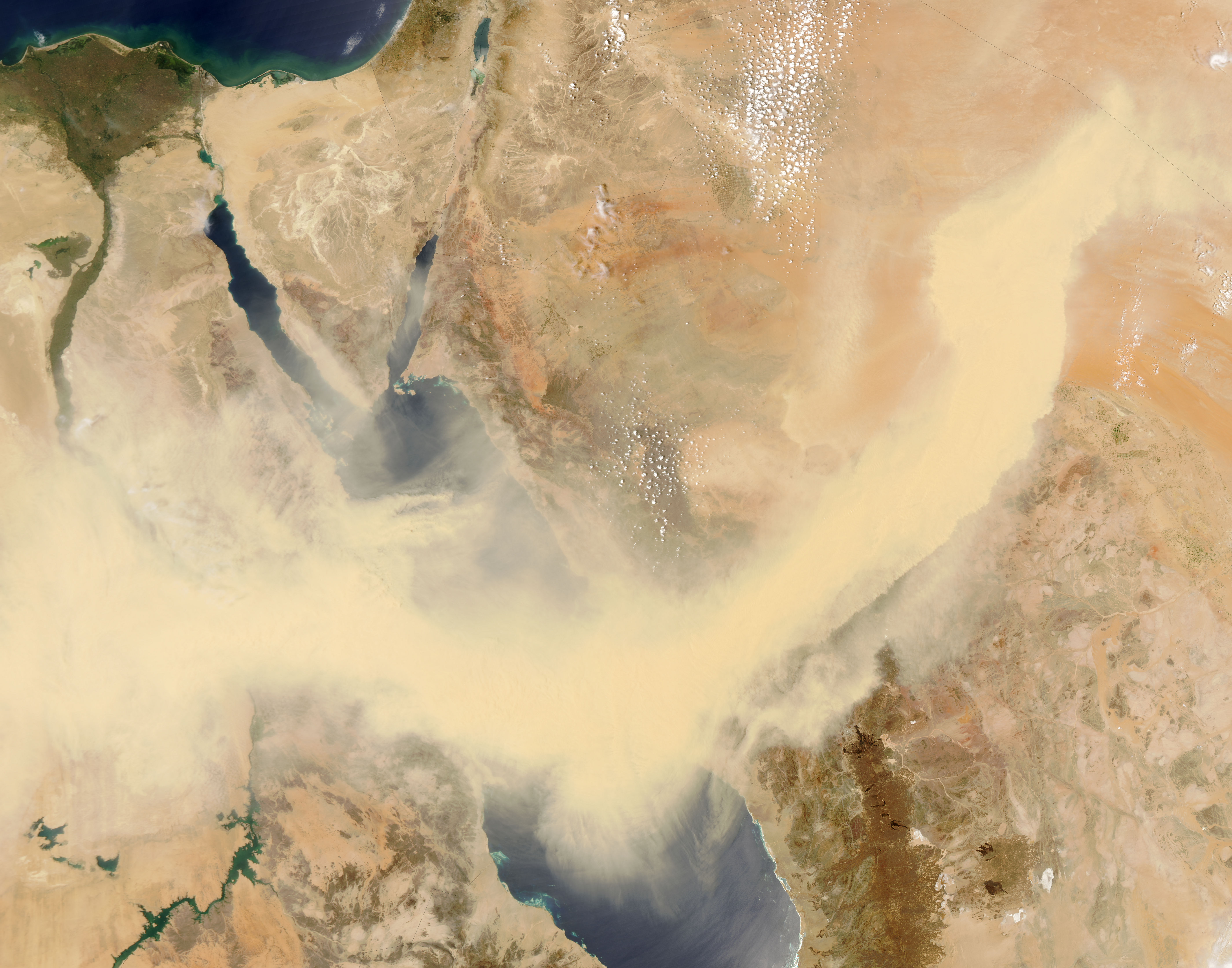
How to survive a sandstorm in a car
Get off the road, quick
If you are in a car and a sandstorm gets the drop on you, it can put you in a very dangerous situation. Your visibility can be reduced to virtually nothing, and it’s not just yourself that your going to have to worry about. All the other clowns on the road can be particularly dangerous, if visibility is poor, they are less likely to see you.
The advice is to make your way off the road at the next safe opportunity, park up on the side, and turn all your lights off. Sounds a bit crazy that to avoid getting hit accidentally, you need to make yourself less visible, but other drivers can be drawn to your headlights like moths to the flame.
If your car is there, then that must be where the road goes, right? And so it is likely for people follow your lights and crash into you.
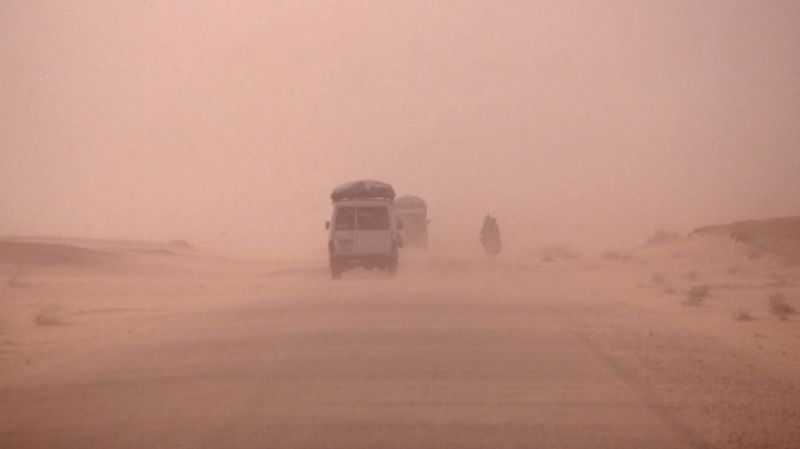
Photo: Albert Backer
Wait it out
Once you are safely off the road and your lights are off, its time to close all your windows, any vent that brings in air from outside and sit back, relax, and relish the prospect of telling your mates you were in a sandstorm.
How to survive a sandstorm on foot
Take cover
If you get caught in a sandstorm while you are out and about on your treks, find the nearest big land form, such as a rock, and take shelter by the side of it. If you are unable to find a shelter quick enough, stay put and do not move. By moving you will put yourself at greater risk from potential hazards, plus you may get yourself lost. If you are in a large group link arms to keep together and prevent anyone from getting separated.
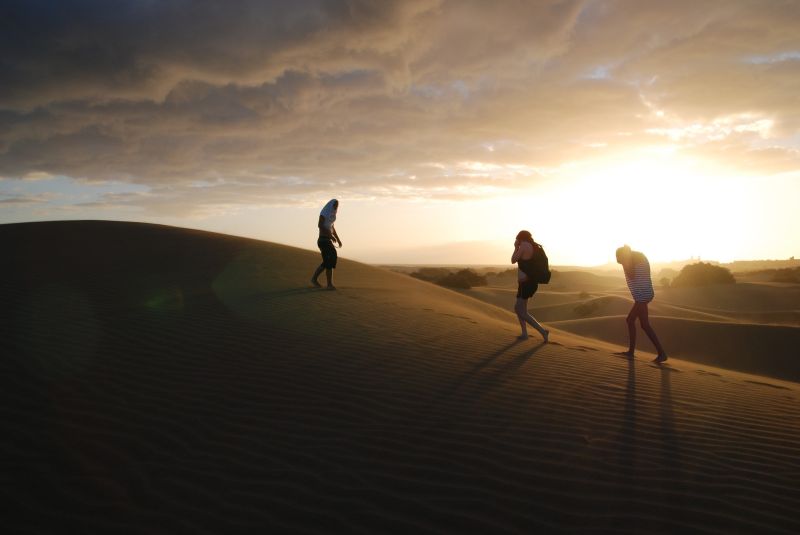
Use your equipment
Remember the first point I said about preparation? Now is the time to put it to good use. Protect your eyes and mouth by wearing the goggles and mask, try and cover your ears to prevent sand blowing into them. It is likely to be extremely dry in a sandstorm so it is worth applying petroleum jelly in your nostrils to prevent them from drying. Wearing long clothing will prevent your skin from getting ripped apart, the sand being blown against your skin will feel like someone giving you a rubdown with some coarse sandpaper.
Caught unaware
If you didn’t heed the warning of my first point, shame on you. You’re now in a sandstorm and you have no eye or mouth protection. Despite this desperate situation there are still some measures you can take. Wet some cloth and tie it around your mouth and nose to prevent sand and dust particles from entering your lungs, then try and breath as normally as possible. You will need another piece of cloth to tie around your eyes and ears to give you the best protection and the best chance of being unharmed when the storm ends.
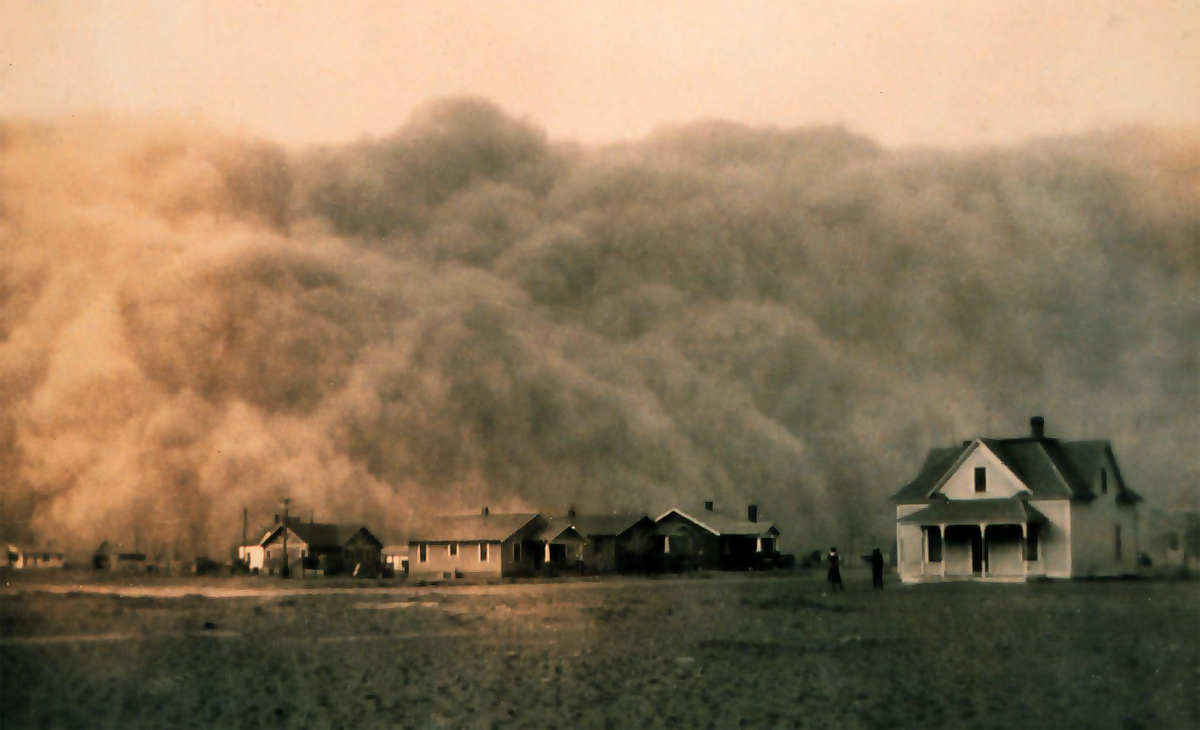
Be aware of…
Sandstorms can happen in unison with thunder storms, so be prepared to experience lightening, and take any measures that will help avoid a lightening strike. The high winds can pick up more than just sand, so protect your head and be on the lookout for large flying objects, the last thing you want is to be knocked out by a flying tree stump.
After you have followed all of these steps, the only thing you can do is wait it out. A game of eye spy is always fun in a sandstorm, but you might run out of things to spy after the first go.
I’ll leave you with a video of someone driving into a sandstorm…crazy



